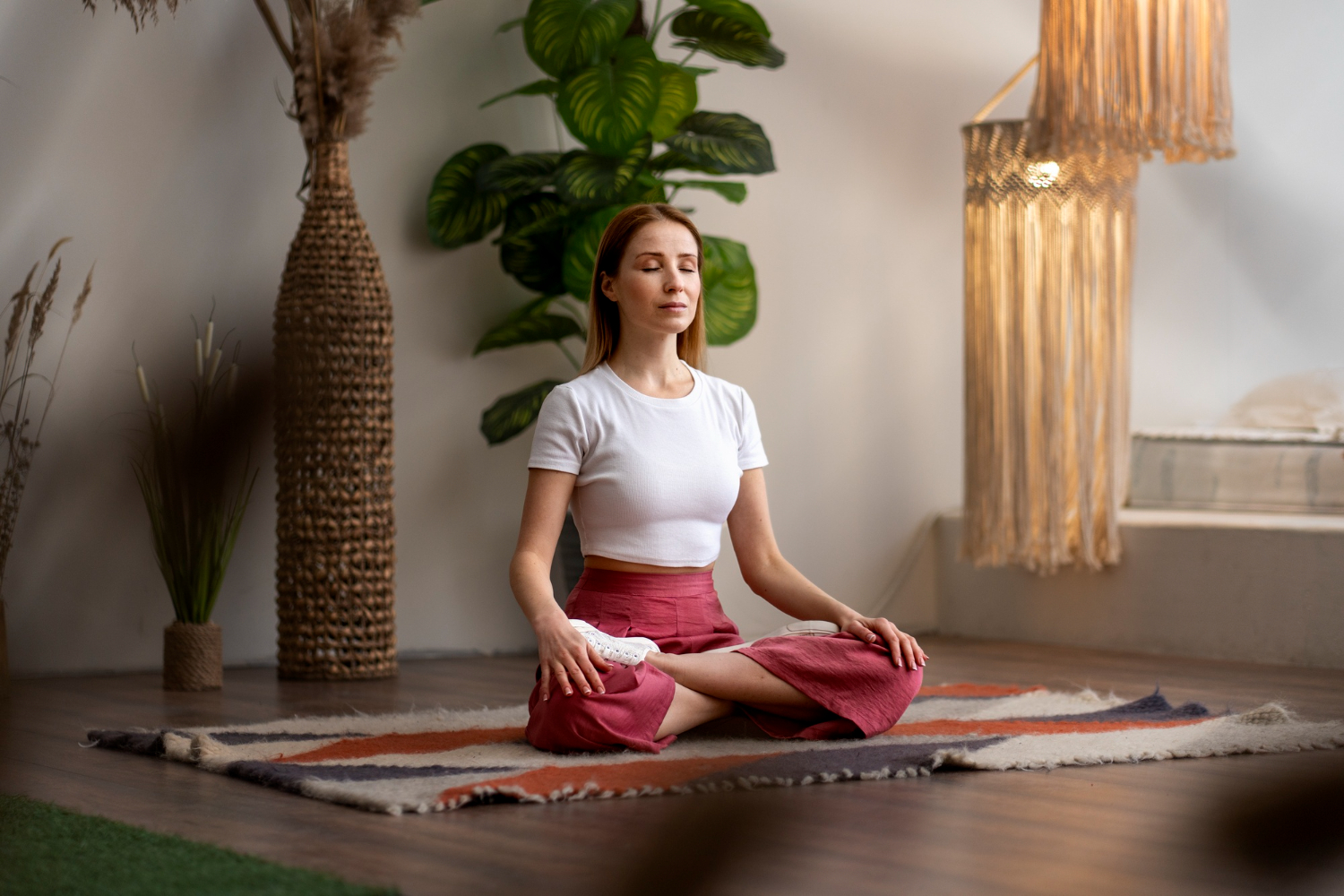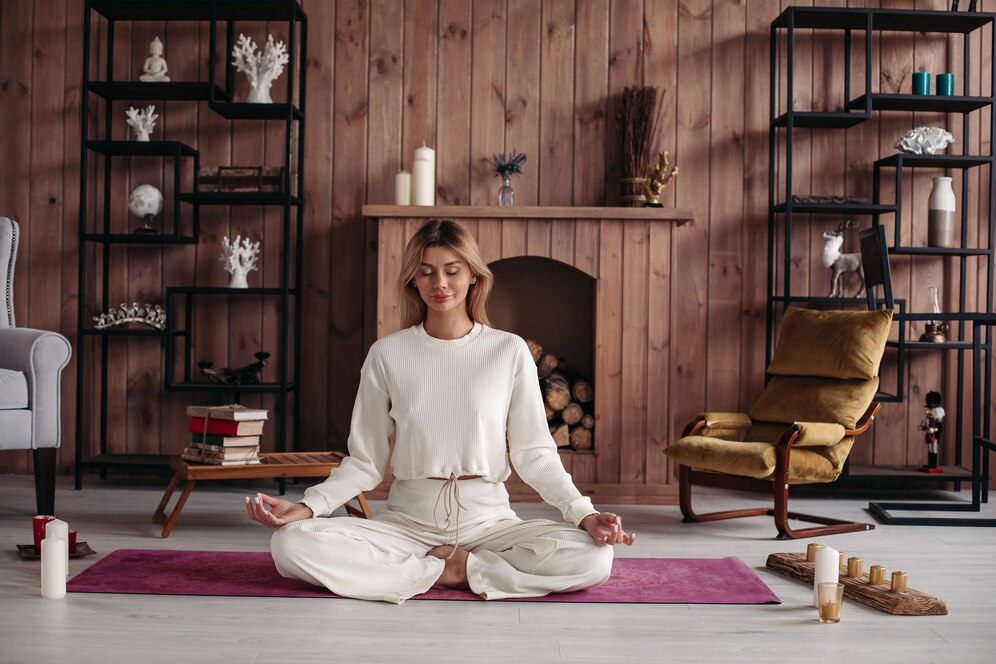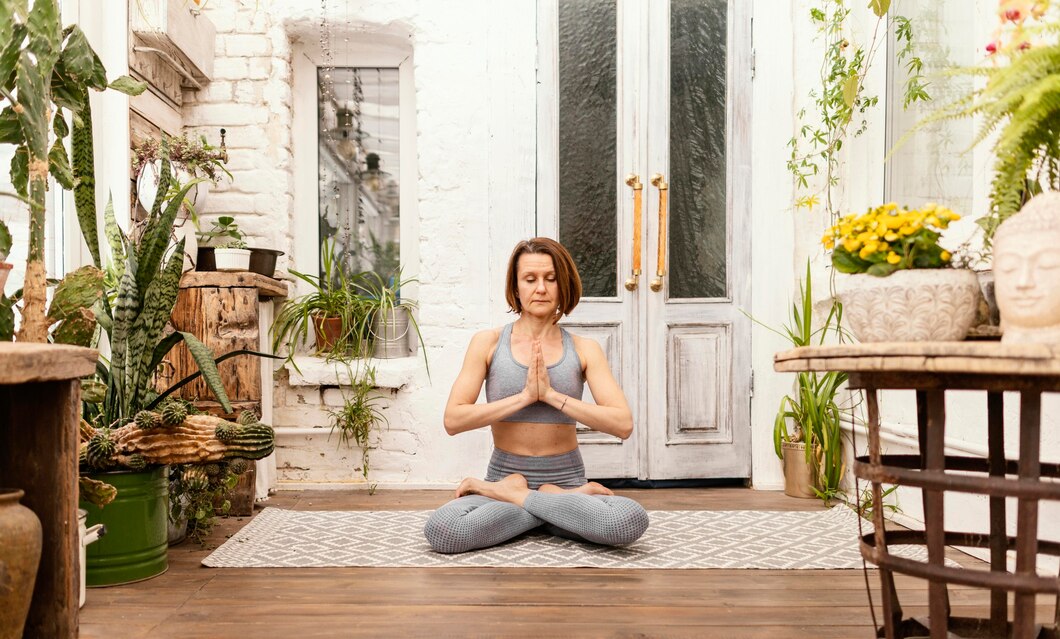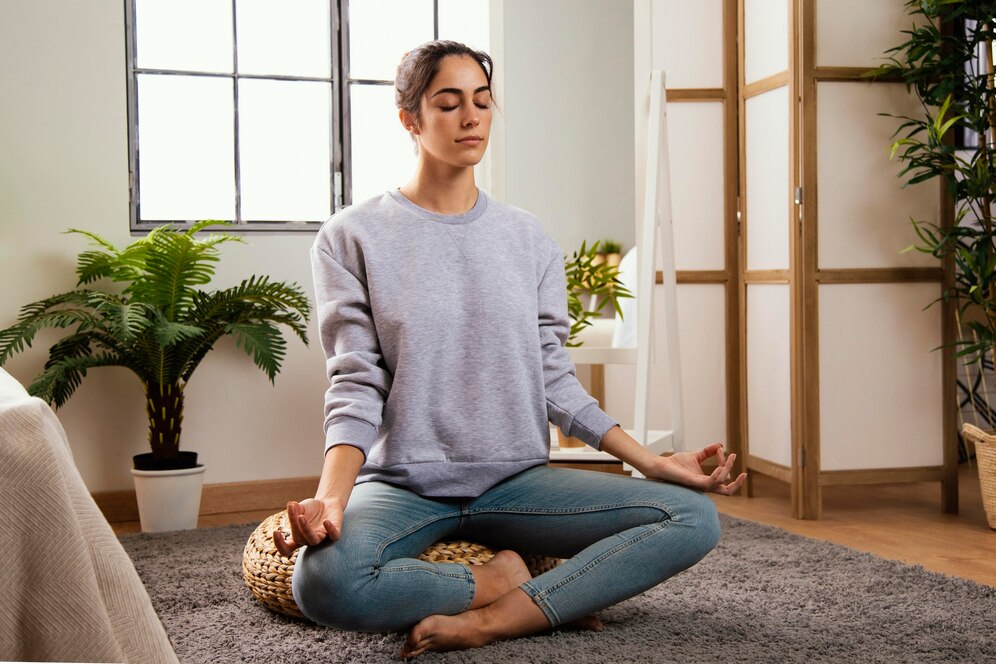
How to Design a Meditation Space at Home
In today’s fast-paced world, finding moments of peace and tranquillity can be challenging. More people are using meditation to lower stress and improve mindfulness. Because of this, setting up a dedicated meditation space at home has become a popular wellness trend. A well-designed meditation space provides a calm spot for relaxation, reflection, and emotional balance.
In this guide, you’ll learn how to design a calming meditation space in your home. This guide will help you create a space for mindfulness. It’s useful for both beginners and those who meditate regularly. It supports your well-being too.
Pro Tip: Designing a dedicated meditation space enhances focus and mental clarity. Keep it simple, minimal, and calming with soft colours, natural materials, and a clutter-free environment to maximise the benefits of your practice.
Quick Guide: How to Design a Meditation Space at Home
- Choose the Right Location: Pick a quiet, private spot with access to natural light.
- Create a Calm Environment: Use calming colours, soft textures, and minimalist furniture.
- Incorporate Natural Elements: Add plants, water features, and sensory accessories to enhance serenity.
- Embrace Mindful Living: Keep the space decluttered and select meaningful decor to promote focus and clarity.
Important Tip: Ensure your meditation space remains comfortable and well-maintained. Regularly refresh your cushions, lighting, and decor to sustain the space’s tranquillity and functionality.
Key Benefits of a Home Meditation Space

Why It Matters
Creating a meditation space goes beyond looks—it’s a step towards improving your mental and emotional well-being. A designated meditation area offers the following benefits:
- Promotes Consistency: Having a dedicated spot encourages regular practice. A specific meditation corner makes it easier to establish a daily habit.
- Enhances Focus and Relaxation: A clutter-free, tranquil environment reduces distractions, helping you concentrate better during meditation.
- Supports Mindful Living: Your meditation space serves as a constant reminder of mindfulness. It promotes awareness and reflection in daily life.
- Improves Mental Health: Meditation is proven to reduce stress, anxiety, and depression. A calming environment enhances these mental health benefits by promoting deeper relaxation.
Real-Life Applications
Consider Sarah, a busy professional overwhelmed by stress. She created a meditation space in her home with calming colours, soft lighting, and natural elements. This soothing environment helped her build a consistent meditation practice, leading to improved mental clarity and emotional stability.
Step-by-Step Guide to Designing Your Meditation Space
Step 1: Choosing the Right Location
Selecting the right spot for your meditation area is essential. Here’s what to consider:
- Quietness: Pick a location free from noise and distractions. A bedroom corner, a spare room, or even a section of your living room can work well.
- Natural Light: If possible, choose a space with access to natural light. Sunlight enhances the calming ambience and positively affects mood.
- Privacy: Ensure your meditation space is private and free from interruptions. This will help you maintain focus during your practice.
Tip: If your home lacks a naturally quiet space, use noise-cancelling curtains or a white noise machine to create a more peaceful environment.
Step 2: Designing with Wellness Interiors

Creating a meditation space involves mindful design choices that promote calmness and serenity. Here’s how to style your meditation area:
Colours and Textures
- Calming Colors: Opt for soft, neutral tones like whites, beiges, and pastels. These colours promote relaxation and reduce visual clutter.
- Textures: Add tactile comfort with soft cushions, plush rugs, and natural materials like wood or stone. Mixing textures creates warmth and depth.
Furniture and Accessories
- Minimalist Furniture: Keep furnishings simple. A meditation cushion, yoga mat, or a comfortable chair is all you need.
- Accessories: Add sensory-enhancing elements such as:
- Candles or incense to create a calming scent.
- Essential oil diffusers for aromatherapy.
- A small bowl with stones or crystals for a grounding visual touch.
Natural Elements
- Plants: Incorporate greenery to purify the air and evoke a sense of calm. Choose low-maintenance plants like peace lilies or snake plants.
- Water Features: Consider adding a small tabletop fountain. The sound of trickling water can enhance relaxation.
Step 3: Incorporating Mindful Living Principles
To fully embrace mindful living, reflect these principles in your design choices:
- Declutter: Keep the space tidy and free from unnecessary items. A clutter-free area promotes mental clarity.
- Intentional Decor: Select decor that holds personal meaning—such as inspirational quotes, serene artwork, or symbolic statues.
- Simplicity: Embrace minimalism. A simple, unadorned space encourages focus and mental calmness.
Additional Expert Tips & Common Mistakes to Avoid
Best Practices
- Personalisation: Make the space your own. Include items with sentimental value, like a meaningful photograph or a special cushion.
- Regular Maintenance: Keep your meditation space clean and organised. Dust surfaces regularly and refreshes cushions or candles when needed.
Common Mistakes
- Overcomplicating the Design: Avoid crowding the space with too many decorative elements. A simple, uncluttered space promotes relaxation.
- Discomfort: Choose comfortable seating or cushions that support good posture. Discomfort during meditation can be a major distraction.
Advanced Insights & Expert Recommendations

Unique Industry Perspectives
Wellness interior experts recommend incorporating biophilic design into meditation spaces. This design approach focuses on connecting people with nature through natural materials, plants, and sunlight. Integrating biophilic elements can significantly enhance the serenity and mindfulness of your meditation area.
Lesser-Known Insights
- Soundscapes and Ambient Music: Using gentle soundscapes, such as ocean waves or birdsong, can deepen your meditation practice.
- Scents for Mindfulness: Incorporate scents like lavender, sandalwood, or frankincense to promote relaxation.
FAQs: Designing a Meditation Space at Home
1. Do I need a large space for meditation?
No. You can create an effective meditation space in a small corner or even a nook. The key is to make it quiet, comfortable, and free from distractions.
2. What are the best colours for a meditation space?
Soft, neutral tones like white, beige, light grey, and pastel hues are ideal. These colours create a soothing atmosphere and reduce visual stress.
3. Should I include technology in my meditation space?
It depends on your preference. While some people prefer a tech-free space, others use sound machines or meditation apps to enhance their practice. If you include technology, keep it minimal and non-disruptive.
4. What plants are best for a meditation space?
Low-maintenance plants such as snake plants, peace lilies, and ferns are excellent choices. They purify the air and create a calming natural ambiance.
5. How do I make my meditation space multi-functional?
If you’re short on space, create a flexible area that can double as a reading or relaxation nook. Use portable meditation cushions and foldable mats to keep the space versatile.
Creating a Serene Meditation Haven at Home
Designing a meditation space at home is a powerful way to enhance your mindfulness practice and boost overall well-being. Focusing on wellness interiors, natural elements, and mindful living helps you create a calm space. This space promotes relaxation, focus, and emotional balance.
As you embark on this journey, keep the space simple, personal, and clutter-free. Let it be a reflection of your path toward inner peace. With regular practice, your home meditation space will turn into a spot for healing, reflection, and calm.

